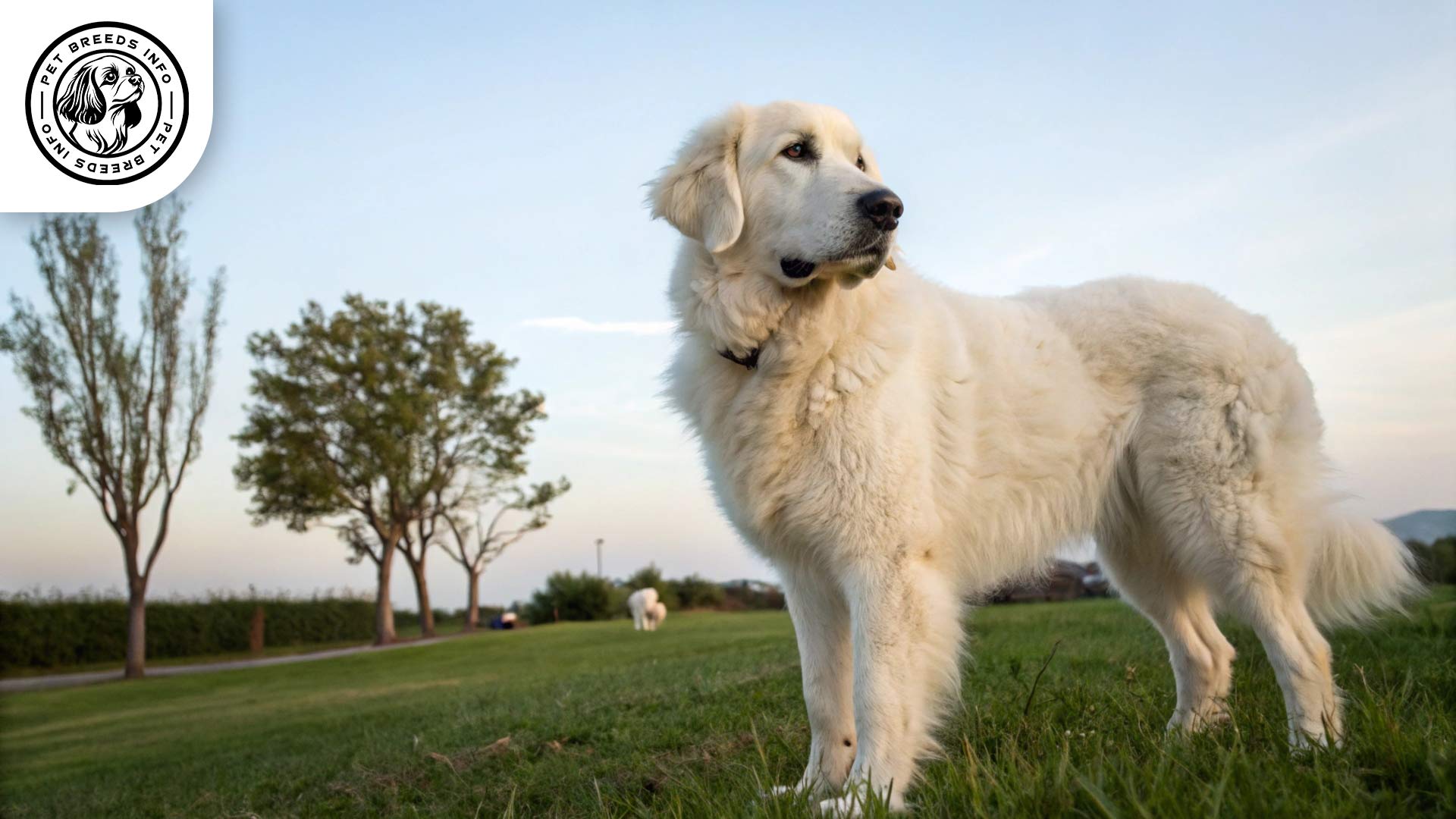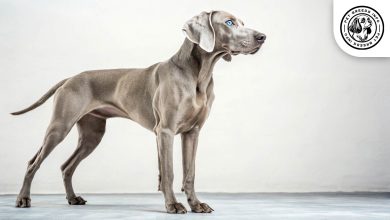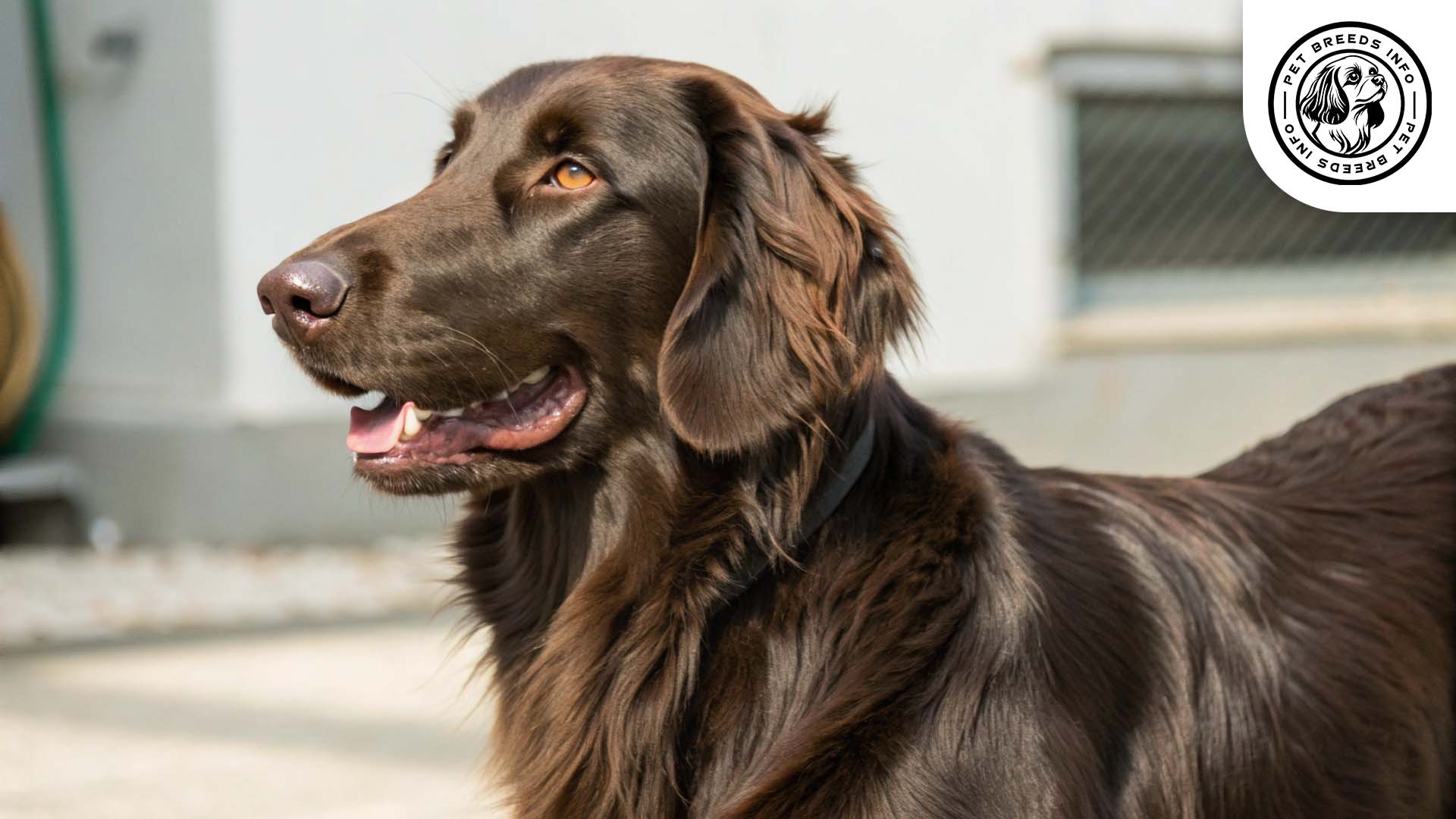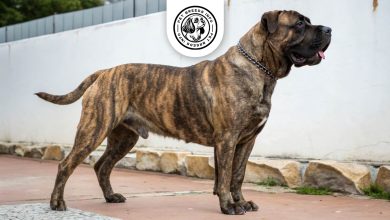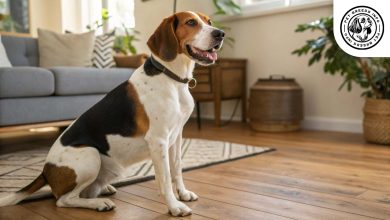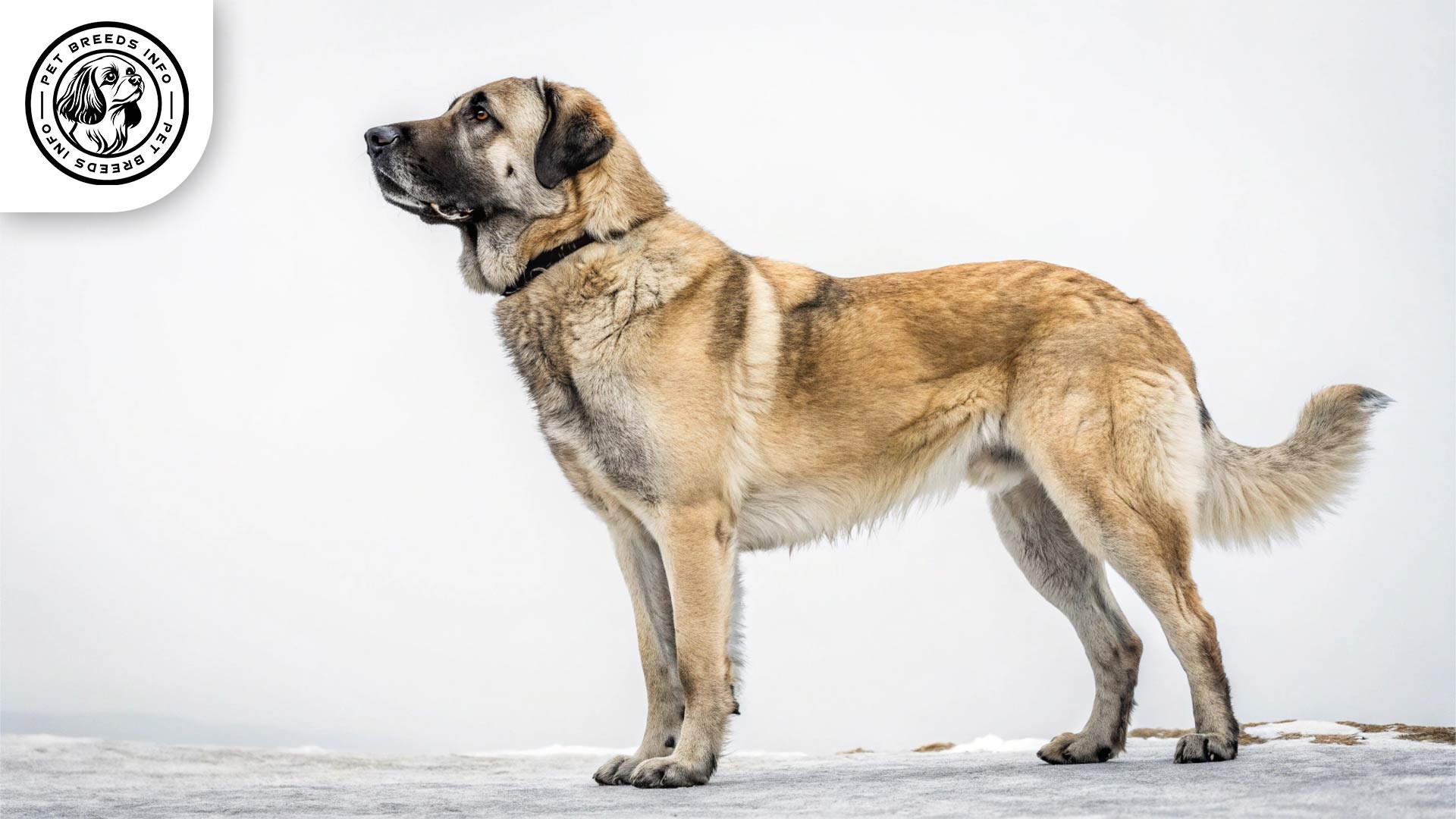Kuvasz Dog Breed: Size, Health, Price & Personality
General Introduction of the Breed
The Kuvasz is a large, majestic dog breed known for its loyalty and protective nature. The breed’s name is derived from the Turkish word “kawasz,” meaning “armed guard of the nobility.” In Hungarian, it is simply known as Kuvasz. This breed originates from Hungary and has a long history as a livestock guardian.
Historically, the Kuvasz was used to protect livestock from predators and was highly valued by Hungarian nobility. Over time, the breed became a trusted companion and guard dog, known for its intelligence, strength, and independent nature.
Table of Contents
| Color | White |
| Weight | Males: 100-115 lbs (45-52 kg); Females: 70-90 lbs (32-41 kg) |
| Lifespan | 10-12 years |
| Diet | High-quality dry kibble, raw food, or balanced natural diet; protein-rich; avoid toxic foods |
| Care | Regular brushing (2-3 times/week), seasonal shedding management, daily exercise, spacious environment, routine hygiene (nails, ears, dental) |
| Health | Prone to hip and elbow dysplasia, progressive retinal atrophy (PRA), and bloat; regular vet check-ups |
| Nature | Loyal, protective, intelligent, independent, wary of strangers, good with family, requires early socialization |
| Price | $1,500 – $3,000 (puppy); lower adoption fees from shelters |
Physical Characteristics
The Kuvasz is a large breed, with males typically standing between 28 to 30 inches tall and weighing between 100 to 115 pounds. Females are slightly smaller, measuring around 26 to 28 inches in height and weighing between 70 to 90 pounds.
The coat of the Kuvasz is thick, dense, and double-layered, providing protection from harsh weather conditions. The only accepted color for the Kuvasz is white.
The Kuvasz has almond-shaped eyes that are dark brown. Its ears are V-shaped, set high on the head, and slightly droop forward. The tail is long and bushy, typically carried low when at rest but raised slightly when alert.
One distinctive feature of this breed is its muscular build and strong bone structure, which contribute to its endurance and working ability.
Read More: Jack Russell Terrier Dog
Personality and Temperament
The Kuvasz is an intelligent and independent thinker, making training both rewarding and challenging. It is highly energetic and requires regular mental and physical stimulation.
This breed is deeply loyal to its owners and forms strong bonds with its family members. However, it tends to be wary of strangers due to its protective instincts.
With proper socialization, the Kuvasz can be good with children, though its large size and energy level require supervision. It typically does not get along well with other pets unless introduced at a young age.
While playful, the Kuvasz retains a strong guardian instinct and can be sensitive to changes in its environment. It is best suited for experienced dog owners who can provide firm yet positive training.
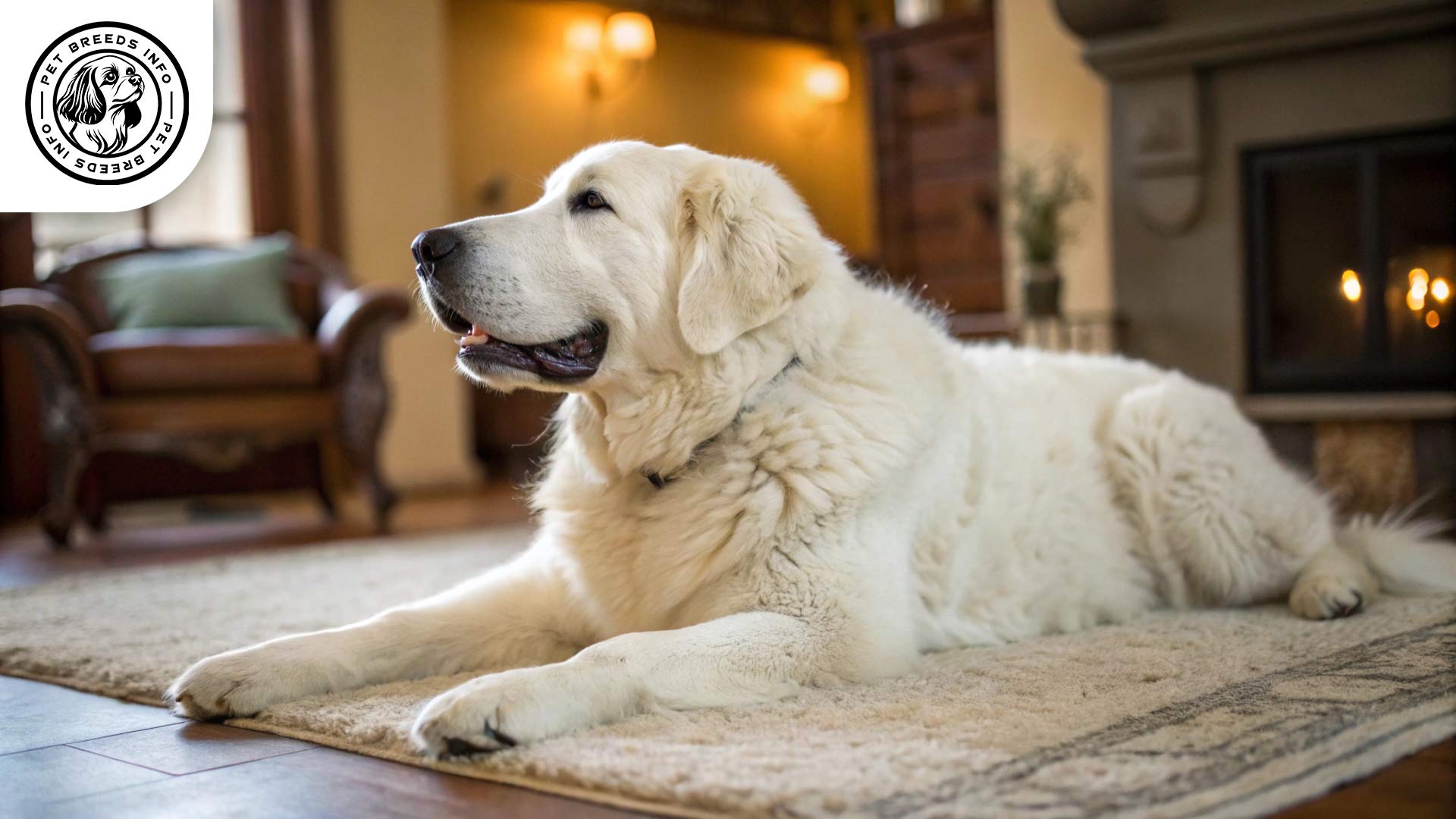
Care and Maintenance Requirements
Exercise is crucial for this active breed. Daily walks, playtime, and access to a secure yard are ideal. Due to its high energy levels, the Kuvasz is not well-suited for apartment living and thrives in a spacious environment.
Its thick coat requires regular brushing, at least two to three times per week, to prevent matting and excessive shedding. The Kuvasz sheds seasonally, requiring extra grooming during these periods.
The breed is sensitive to extreme heat, so owners should provide shade and fresh water during hot weather. It is more tolerant of cold temperatures due to its dense coat.
Routine hygiene practices, such as nail trimming, ear cleaning, and dental care, are necessary to maintain the Kuvasz’s overall health.
Diet and Nutrition
A high-quality diet, including dry kibble, raw food, or a well-balanced natural diet, is recommended for the Kuvasz. Protein-rich foods help maintain muscle mass, while essential fatty acids promote coat and skin health.
This breed has no specific dietary restrictions, but overeating can lead to obesity. Owners should avoid feeding excessive amounts of human food, and toxic foods such as chocolate, grapes, and onions should be strictly avoided.
Portion sizes should be based on the dog’s age, weight, and activity level, typically divided into two daily meals to aid digestion and prevent bloating.
Read More: Irish Water Spaniel Dog
Health and Common Medical Issues
Common genetic health conditions in the Kuvasz include hip dysplasia, elbow dysplasia, and progressive retinal atrophy (PRA). This breed may also be prone to bloat, a life-threatening stomach condition.
The Kuvasz has an average lifespan of 10 to 12 years. Regular veterinary check-ups, vaccinations, and routine parasite control are essential for maintaining good health.
Due to its size and joint structure, extra care should be taken to prevent excessive weight gain, which may lead to joint problems.

Training and Behavior Management
Training a Kuvasz requires patience, consistency, and positive reinforcement. Due to its independent nature, early training and socialization are highly recommended.
Positive reinforcement techniques, such as praise and treats, work best for this breed. Harsh training methods should be avoided, as they may lead to distrust or resistance.
Firm leadership and mental challenges, such as advanced obedience training, agility exercises, or herding activities, help keep the Kuvasz engaged and well-behaved.
Interaction with Other Animals and Humans
The Kuvasz is affectionate and protective of its family but reserved around strangers. Early socialization with humans and pets is essential for well-rounded behavior.
While it can form strong bonds with children, supervision is necessary due to its size and strength. With proper introduction, it may coexist with other pets, but this breed generally prefers to be the sole guardian of its home.
Due to its protective nature, the Kuvasz is well-suited for families with experience handling large, independent dogs.
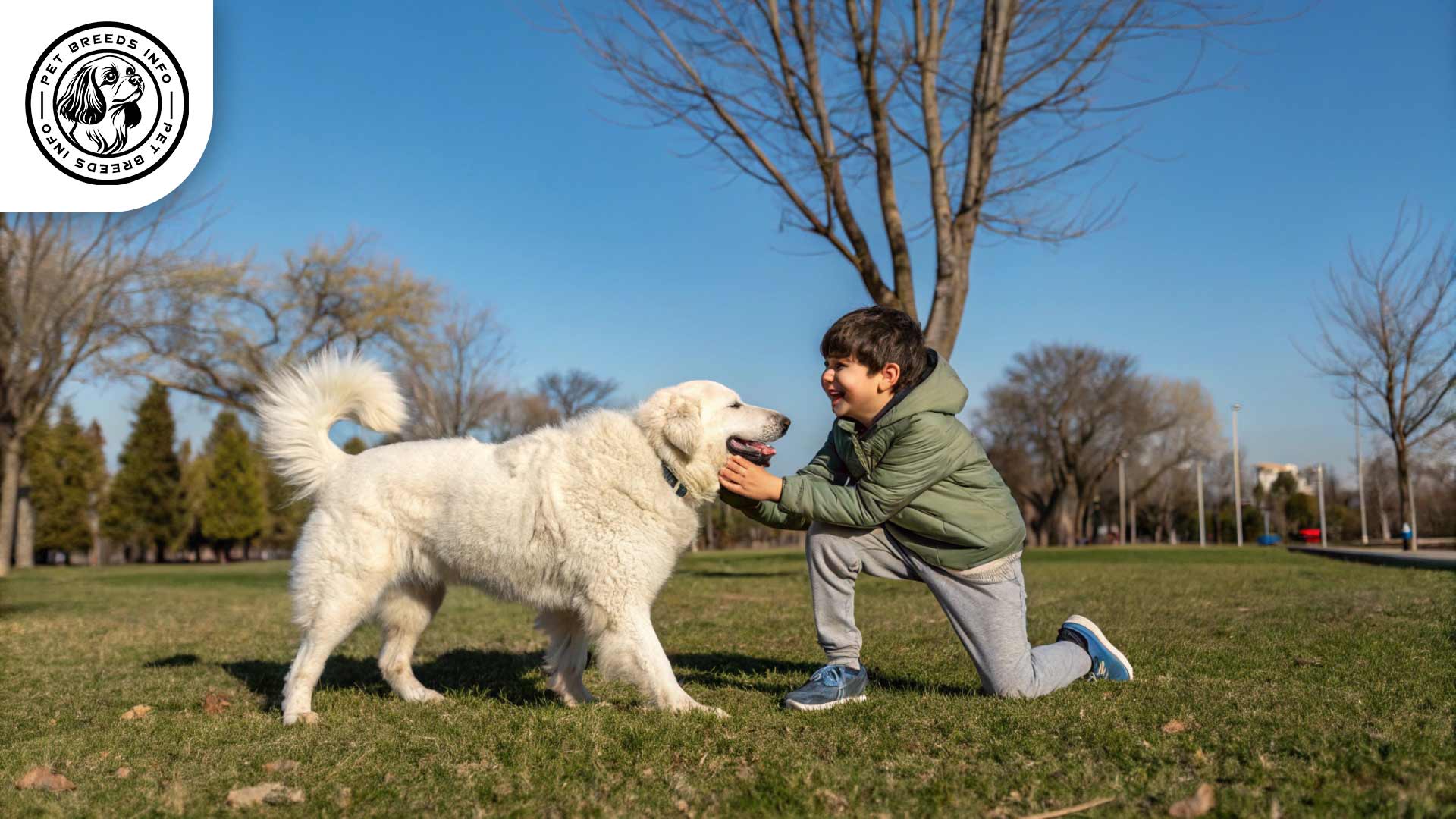
Price and Availability
The cost of a Kuvasz puppy can range from $1,500 to $3,000, depending on the breeder, pedigree, and location. Adoption fees from shelters or rescue organizations are generally lower.
When purchasing a Kuvasz, it is advisable to choose reputable breeders who conduct health screenings to ensure the well-being of their puppies. Adoption from Kuvasz-specific rescues is also an ethical option for potential owners.
Read More: Italian Greyhound Dog
Conclusion and Final Thoughts
The Kuvasz is a loyal and intelligent breed best suited for experienced owners who can provide firm leadership, socialization, and an active lifestyle.
This breed thrives in large spaces and requires regular physical and mental stimulation. It is ideal for families seeking a dedicated guardian and companion, but it may not be suitable for first-time dog owners due to its independent mindset.
Potential owners should consider the breed’s strong guarding instincts, exercise needs, and grooming requirements before making a decision.
FAQ
Is the Kuvasz a good family dog?
Yes, the Kuvasz can be a good family dog with proper socialization and training. They are loyal and protective of their family members. However, due to their large size and strong guarding instincts, they are best suited for experienced dog owners. Supervision is necessary when they are around children.
How much exercise does a Kuvasz need?
The Kuvasz is an active breed that requires daily exercise, including walks, playtime, and access to a secure yard. They are not well-suited for apartment living and thrive in a spacious environment.
What kind of grooming does a Kuvasz need?
The Kuvasz has a thick, double-layered coat that requires regular brushing, at least two to three times per week, to prevent matting and excessive shedding. They also shed seasonally, requiring extra grooming during these periods.
What are some common health issues in Kuvasz dogs?
Common genetic health conditions in the Kuvasz include hip dysplasia, elbow dysplasia, and progressive retinal atrophy (PRA). They are also prone to bloat, a life-threatening stomach condition.
How much does a Kuvasz puppy cost?
The cost of a Kuvasz puppy can range from $1,500 to $3,000, depending on the breeder, pedigree, and location. Adoption fees from shelters or rescue organizations are generally lower. It is advisable to choose reputable breeders who conduct health screenings to ensure the well-being of their puppies.
